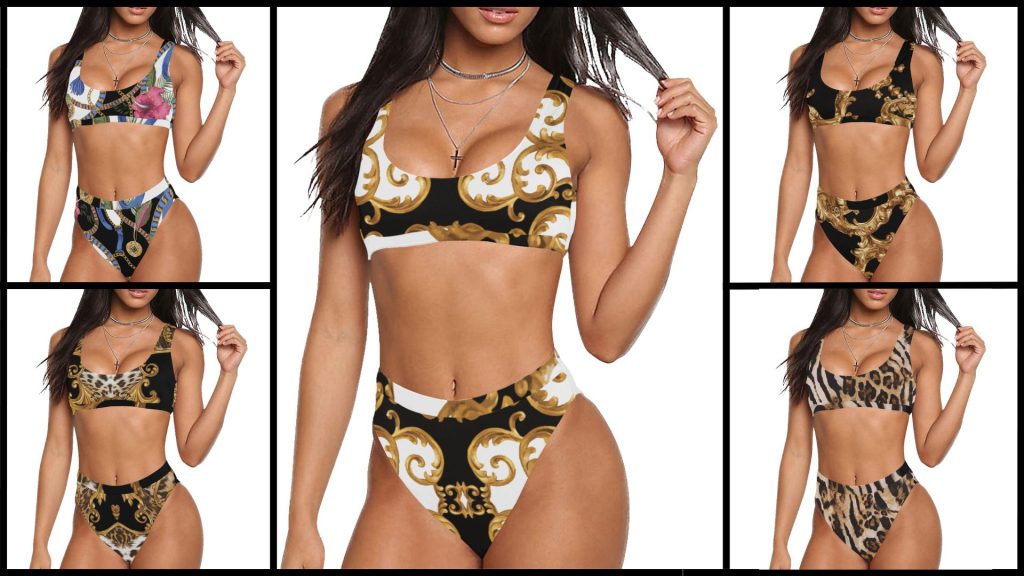The History of the Slip Dress: From Lingerie to Fashion Statement
The slip dress is a wardrobe staple that has undergone significant transformation since its inception. Once confined to the realm of lingerie, the slip dress has become a timeless fashion statement, beloved for its simplicity, elegance, and versatility. From its roots in Victorian undergarments to its place on modern runways, the slip dress has evolved into a piece that represents both sensuality and sophistication. Let’s take a closer look at the history of the slip dress and how it has become a key item in fashion history.
1. Origins: Victorian Lingerie and the Evolution of Underwear
The slip dress has its origins in the late 19th century, during the Victorian era, when women’s fashion was characterized by complex layers of undergarments. At this time, slips were worn as an underlayer, typically made of lightweight fabrics like silk, satin, or cotton. These garments were designed to protect the outer clothing from sweat and oils while providing a smooth surface for the outer dress to glide over.
The Victorian slip was often a loose-fitting, knee-length garment, worn to help create a streamlined look beneath the voluminous skirts and corsets of the time. It wasn’t designed to be seen, but rather to serve as a practical piece of clothing that aided in the overall structure of a woman’s wardrobe. As fashion continued to evolve, so too did the role of slips in women’s clothing.
2. The 1920s: The Birth of the Modern Slip Dress
In the 1920s, the slip underwent a significant transformation, particularly with the rise of the flapper era. The influence of the flapper dress, which was characterized by its loose, straight silhouette, led to the creation of the modern slip dress. Designers such as Coco Chanel played a key role in shifting the focus from corsets and petticoats to more fluid and relaxed garments. The slip dress, as we know it today, began to take shape during this time.
The slip dress of the 1920s was typically made from silk or satin, and it featured a simple, straight cut that hugged the body loosely. It often had thin spaghetti straps and was designed to be worn as a standalone garment rather than hidden beneath layers of clothing. This marked the first step in the slip dress’s journey from lingerie to outerwear.
3. The 1930s and 1940s: Hollywood Glamour and the Slip Dress as Evening Wear
By the 1930s, the slip dress had cemented its status as a piece of eveningwear, largely due to the influence of Hollywood. Actresses like Jean Harlow and Rita Hayworth were frequently photographed wearing satin slip dresses on and off screen, helping to popularize the style among the general public. The glamorous aesthetic of these slip dresses, often adorned with lace or delicate detailing, made them ideal for formal events and romantic evenings.
During this period, slip dresses were often designed with luxurious fabrics such as satin, silk, and velvet, and they featured elegant details like lace trims, bows, and embroidery. The slip dress became synonymous with luxury and sophistication, taking on a refined and glamorous persona that made it a staple in eveningwear.
4. The 1960s and 1970s: A Symbol of Feminine Liberation
In the 1960s and 1970s, the slip dress experienced a resurgence as part of the larger cultural movement toward women’s liberation and equality. As women began to embrace more relaxed and comfortable clothing, the slip dress became a symbol of both sensuality and freedom. The 1960s and 1970s saw the rise of minimalist fashion, and the slip dress fit perfectly into this aesthetic.
Designers like Yves Saint Laurent and Jean-Paul Gaultier incorporated slip-style dresses into their collections, reinterpreting the garment as both chic and wearable for everyday occasions. The slip dress was no longer just for formal events or eveningwear but became versatile enough to be worn during the day. With the advent of bohemian and hippie styles, the slip dress also became associated with the free-spirited, effortless aesthetic of the era.
5. The 1990s: The Slip Dress Makes a Bold Comeback
The 1990s saw the slip dress undergo one of its most iconic renaissances, thanks in part to the rise of grunge fashion and supermodels like Kate Moss and Naomi Campbell. The slip dress became a symbol of the era’s laid-back, androgynous aesthetic. Designers like Kate Moss for Calvin Klein brought the slip dress into the mainstream, making it a key piece in casual, everyday wardrobes. This era also saw the slip dress paired with T-shirts, oversized blazers, and combat boots, making it a statement of both sensuality and rebellion.
The minimalist vibe of the 1990s emphasized simplicity, and the slip dress, with its clean lines and delicate fabric, perfectly embodied this ethos. Its ease of wear and timeless appeal made it a wardrobe favorite, and it was embraced by both fashion-forward celebrities and the general public alike.
6. The 2000s to Present: The Slip Dress Becomes a Timeless Fashion Icon
As we moved into the 2000s and beyond, the slip dress maintained its place in popular fashion. It has remained a wardrobe staple for modern women, continuing to evolve with each decade while retaining its original charm. Today, the slip dress is available in a variety of fabrics, lengths, and styles, from more casual cotton and linen versions to high-end satin and silk creations.
The slip dress has also become a favorite among celebrities and influencers, often seen on the red carpet and in street style looks. Designers continue to reinvent the slip dress, adding elements such as intricate lace detailing, bold prints, and unique necklines to keep the silhouette fresh and exciting.
Additionally, the slip dress has become a versatile piece in both day and night wardrobes. It can be dressed up with accessories and heels for an evening look or paired with a denim jacket and sneakers for a more casual, daytime outfit. This flexibility is one of the reasons the slip dress has remained a beloved fashion item for so many years.
7. Conclusion: A Fashion Staple for the Ages
From its origins as a practical undergarment to its status as a fashion icon, the slip dress has evolved into a timeless piece of clothing that continues to captivate and inspire. Its ability to transition from intimate wear to a statement-making garment demonstrates its versatility and enduring appeal. Whether worn as part of a minimalist look or as a glamorous evening gown, the slip dress remains a symbol of feminine elegance, sensuality, and style.
The history of the slip dress reflects not only the evolution of fashion but also the changing roles of women in society. It is a garment that speaks to both freedom and sophistication, and its place in fashion history is well-deserved. No matter the era, the slip dress will likely continue to be an essential and versatile item in wardrobes for years to come.





